Peter Doroshenko, Director of the Ukrainian Museum in New York, on Decolonization, Museum Strategy, and the Future of Ukrainian Art

Lesia Liubchenko
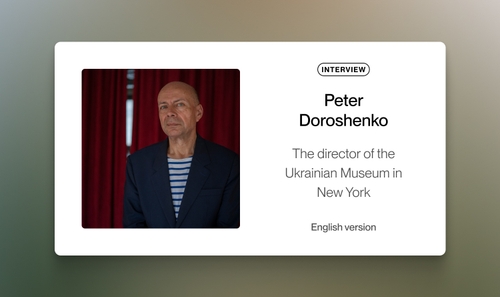
Interview conducted by Lesia Liubchenko, Content Lead of UFDA. This interview is also available in Ukrainian. Click here to read it.
When Peter Doroshenko became the director of the Ukrainian Museum in New York in 2022, his task was not just to lead the institution, but to articulate its mission at a time of global interest in Ukraine. We spoke with Mr. Doroshenko about decolonization, the pursuit of international recognition for Ukrainian artists, the often-invisible work of museum professionals, and the logic behind cultural funding. And also — about why it’s sometimes important for a viewer to leave an exhibition feeling angry.
Lesia: Peter, you took over as director of the Ukrainian Museum in New York at a difficult but also symbolically important moment. First, because Ukraine has become a focal point of global attention, and second, because now is the time when we can assert ourselves more powerfully in the cultural sphere. Given that, how do you currently see the museum’s mission, and what challenges do you face?
Peter: Our mission is very focused, and that is to spread awareness — to those who attend exhibitions in New York or simply live there, to diaspora communities, and tourists — about Ukrainian culture, so that people understand what it really means. That’s the primary goal. When I began this role three years ago, we identified three main directions for the museum’s work.
The first is decolonization: the assertion that this is Ukrainian culture, not Russian. We are constantly working on this. It’s a massive undertaking, but we’ll keep going until the situation changes. The second is the war, and this focus remains as long as the war continues. It is incredibly important for us to speak about it, to collaborate with artists, and to spread awareness about the tragedy unfolding.
And third, when the war began, many people who had never really understood where Ukraine was on the map — or what cities it included — discovered that their ancestors, maybe a grandmother or grandfather, came from Kherson, Kharkiv, Dnipro, or Zaporizhzhia. And that these places are not in Russia — they are in Ukraine. They had heard these names as children but had never given them much thought. Then, they looked at a map and said: “My God, I have Ukrainian roots — a Ukrainian identity!” And that changed a lot.
So, we are also raising questions like: What does it mean to be Ukrainian? Who is Ukrainian? That’s very important, because now, after more than three years of war, many people are interested in Ukraine. They come to the museum, trying to learn more about it. And our foundation is culture — whether it’s music, dance, or presenting our collection.
This is a bit different from other organizations in the U.S., but people come wanting to learn as much as possible. And that’s what we’re working on — through exhibitions, events, workshops, masterclasses, and more.
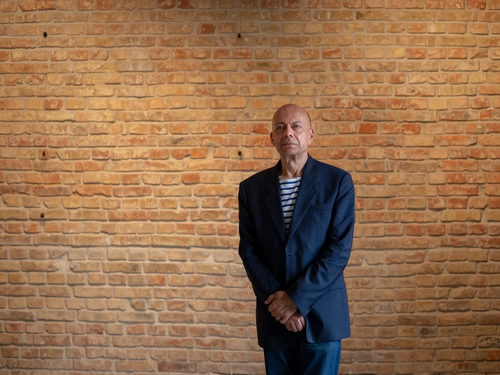
Lesia: And in your opinion, how is Ukrainian art represented in the United States overall? What themes and which artists dominate?
Peter: Right now, it’s a bit mixed. There are some artists who are clearly recognized as Ukrainian. And then there are avant-garde artists who most people in America still think of as Russian — whether it’s Kazimir Malevich, Vladimir Tatlin, or Alexandra Exter. You can find an entire list of such artists online. As President Zelenskyy said, Russia has been spreading propaganda and lies for over 150 years, claiming that all of them are Russian. And Ukraine has only seriously started addressing this issue about three years ago. Again, this is a challenge — but it’s something we have to tackle.
Take, for example, the artist Borys Mykhailov — everyone knows he’s Ukrainian because he constantly states that he’s from Kharkiv and that he is Ukrainian. That kind of clarity is more common among contemporary artists — they understand and assert their identity.
But when it comes to our history — with figures like Illia Repin or Malevich — they are constantly misidentified because of Russian propaganda and falsehoods. People believe they were Russian. And that’s something we need to change.
Lesia: In your opinion, what is still missing for Ukrainian art to gain greater visibility in the world? What more should we do to achieve that?
Peter: I don’t want just to say "more exhibitions, more books..." Yes, those things help, but what’s really needed is more systemic action. All of us — in Ukraine, in the U.S., in Canada — need to start working together toward this goal.
We need to fix the situation where Ukraine is going one way and the U.S. is going another, and instead develop a shared, coordinated strategy. That’s starting to happen, slowly.
I’m constantly grateful to the Ukrainian Institute in Kyiv — they’re working on the issue of decolonization. That’s a good start, and they are helping. But I think it will take more time. Again, there’s the ongoing pressure of the war. People have only just begun to work on this, but I already see gradual changes happening.
... we identified three main directions for the museum’s work. The first is decolonization: the assertion that this is Ukrainian culture, not Russian.
Lesia: In your opinion, do the people promoting Ukrainian art abroad and those working on it directly in Ukraine sometimes speak different languages — not just literally, but also methodologically? Do their approaches to promoting Ukrainian art differ?
Peter: I would say that now, more and more, everyone is getting on the same page — trying to understand the what, how, and why. Also, with access to the internet, the dynamics of information-sharing are changing. I think that has a big impact and makes it easier to understand what’s happening here or somewhere abroad — in places like New York, Buenos Aires, or Tokyo. But it’s also important that there continues to be more information available, so that people have access to it.
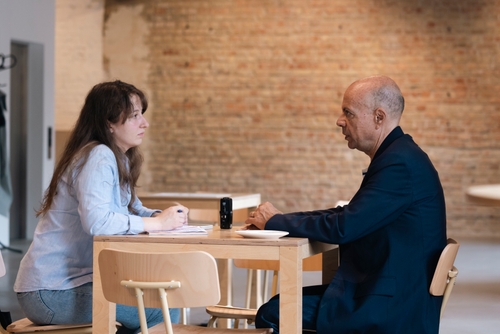
Lesia: Has the attitude of donors, patrons, and collectors toward Ukrainian art initiatives changed overall since the beginning of 2022?
Peter: Yes and no. I think those who were already interested still remain interested — maybe that number has grown a bit. More people now know about Ukraine, and more Ukrainian artists are being showcased. But it's still a very small percentage, and there’s a lot of work to do, because the historical context has not yet been corrected. Yes, contemporary artists are more focused on this because it’s part of today’s conversation. But the context still doesn’t fully exist. We need to build a stronger foundation so there’s a clear understanding of why it matters.
Lesia: Because contemporary artists can speak for themselves, but those who have passed away, unfortunately, cannot.
Peter: You’re absolutely right, yes. I’m currently working on a book about Malevich. He wrote about his life — there are versions in Ukrainian and Russian — but we’ve translated it into English for the first time to show people abroad that he was not Russian and that he considered himself Ukrainian. You can check online right now: on 99% of resources, it still says he was Russian. Thankfully, that is slowly starting to change — especially in museums, particularly in Europe. That’s part of decolonization, and it’s a massive undertaking, and a very important one.
And that’s just one artist. There are hundreds like him. It’s important to do this work because it gives contemporary artists clarity and confidence about who they are, what they’re doing, and how to present themselves internationally.
Lesia: In your opinion, how should the process of reattributing an artist from Russian or Soviet to Ukrainian take place? Are museums themselves taking the initiative to uncover the truth, and how fast or slow is this process at the moment? What do you observe among your colleagues?
Peter: There are those who quickly accept the information and then update their descriptions accordingly. But there are also those — and this includes most major museums — who move very slowly and are afraid of making changes. That applies to curators, writers, and critics alike. It’s a long process. However, even in this short time, so much has already changed that I’m honestly shocked. And the change is still ongoing. I’d say that Ukraine has made significant contributions to advancing this effort.
Making change on a global scale will take several years — or even 10 to 15. But absolutely everyone must accept these changes.
Lesia: We must persist.
Peter: Yes, yes.
It’s necessary for the world to come here, to visit the artists in Ukraine, and then go back home. Unfortunately, there is no program that allows them to see, say, ten artists in two days in Kyiv. That would help — it would help everyone — but it doesn’t exist.
Lesia: With Donald Trump returning to power, have you noticed any changes in your work? Has the new political climate affected the museum’s strategic decisions, collaborations, funding, or any other processes?
Peter: What has changed? That very small window when support was provided for exhibitions, events, and catalogs has now closed. This has a minor impact on our museum, but unfortunately, other museums have felt it more strongly. For us, largely, nothing has changed.
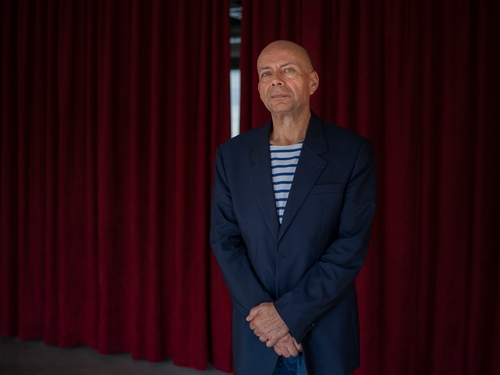
Lesia: If it’s not a secret, is it difficult for the Ukrainian Museum to find funding for its projects?
Peter: Yes, because we receive a very small percentage — about 2 to 3% — from the City of New York and the State of New York. All other support comes from our large membership base, foundations in New York, and global foundations. We also have to organize many fundraising events, where people come to an exhibition, gala, or another program and pay around $500 per ticket. These kinds of activities are common for all museums, not just the Ukrainian Museum.
Our board of trustees also does a great job with fundraising. Every year, we develop a plan for how to finance the institution and organize the exhibition program in a way that attracts visitors and secures sponsors and support. It’s not too difficult, but I’d say it takes up about 70% of my time. Everyone thinks my job is just to have coffee in a café and talk about Repin. But that’s just my dream.
Lesia: Instead, you spend your time seeking grants?
Peter: Yes, all the time. And again, this is not only true for the Ukrainian Museum — it’s how all museums in the U.S. and Canada operate.
Lesia: Let’s move directly to the artistic work and the artists themselves. In your opinion, what mistakes do Ukrainian artists make when trying to reach a more global level and present their work to the world?
Peter: I would say these are not the artists’ mistakes, but the mistakes of the systems that exist here. It’s necessary (and I’ve been saying this for 20 years, ever since I worked as president of the PinchukArtCentre in Kyiv) for the world to come here, to visit the artists in Ukraine, and then go back home.
I’m not saying everyone must organize exhibitions or get involved directly, but at least they should come and see the context — to understand that people are working here. This is important, but it doesn’t exist and never has.
Even among those who do come — whether for the Maria Prymachenko exhibition or as jury members for the PinchukArtCentre Prize — there’s unfortunately no program that allows them to see, say, ten artists in two days in Kyiv. That would help — it would help everyone — but it doesn’t exist. For 15 years, I’ve told this to every Minister of Culture. They just blink at me, and nothing happens.
Other nations have these programs; they have organizations that invite curators and critics. Now, with the war, it’s difficult — no one will come. But even before the war, it didn’t exist. When the war ends, this will be very necessary.
I don’t want to say artists are doing something right or wrong. I think the first step must be some kind of systematic action. Then artists will have the option to join or not.
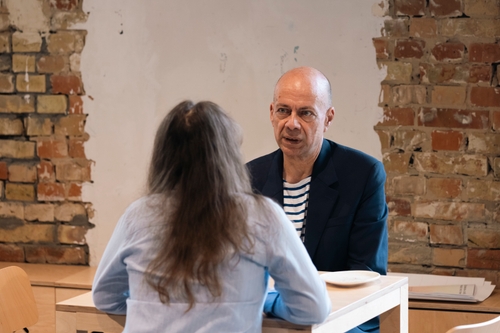
Lesia: What advice would you give to young curators and cultural managers who are just beginning to enter the global stage? Maybe some advice you would give your younger self at the start of your career?
Peter: I think there’s this widespread issue where everyone wants to be a curator. And that’s the first thing I would change. The focus should be more on the artists, not on curatorial work. Because for me, curatorial work was about how I could work with artists — whether it’s writing some materials or establishing contacts with collectors. But for some reason, everyone thinks the exhibition is the most important thing. Yes, it’s important, but it’s only one of many ways.
Lesia: That’s the first step, and then it’s about developing connections?
Peter: Yes. But everyone only wants exhibitions, exhibitions, exhibitions. However, writing an article occasionally for a magazine or newspaper will have a greater impact than an exhibition. Exhibitions last a few months and then end. But a book or article in a newspaper or on the internet will last indefinitely, for years. And those who are interested will be more engaged — they’ll read, think, and return to that information again. That’s important.
I would say being a good curator means keeping in mind how not to be a curator. Instead, focus on how to help artists and worry less about the show or thinking that everyone has the answers to serious cultural matters.
The focus should be more on the artists, not on curatorial work.
Lesia: Should a curator adopt a more altruistic stance and focus on the art itself rather than self-promotion?
Peter: Yes. Also, about having a title — curator… I’m not against it, but often this person is simultaneously a writer, curator, critic, teacher, and so on. It doesn’t work that way. Choose one path that truly interests you and be as good as you can at it; try your best to work on it. Otherwise…
Lesia: Confusion.
Peter: A bit of confusion. I’m not against it, but, for example, when people ask me about my position at the museum, I reply: “Unfortunately, I am the director.” They ask again: “Why ‘unfortunately’?” I say it’s because it’s painstaking work. The director’s position doesn’t feed my ego. But I’m very interested in helping artists so that more people engage with our culture. It’s not about me; it’s about what I want to help build, participate in, and spread ideas and activities so more people get involved and learn something. Because we’re all students until we die.
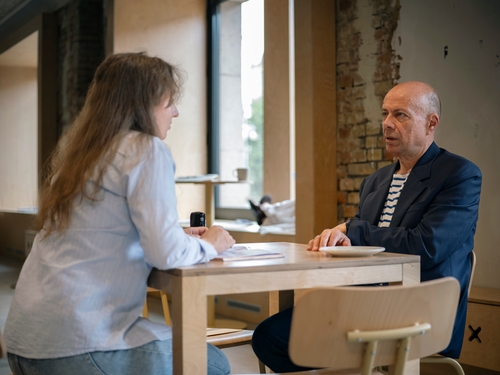
Lesia: For life.
Peter: Yes. And for me, that’s the most important thing. The title of director or curator — that’s just a fantasy.
Lesia: The latest projects realized by your team are the publication Tatlin: Kyiv and the exhibitions of Maria Prymachenko and Peter Hujar. What kind of reaction did they provoke from the public? What were the reviews like? Are you satisfied with what you created?
Peter: Yes, I am satisfied. I think it was very important because it fits into the three directions we work in and that make up our mission. Each exhibition had an impact on different groups of people who visited the museum: either young people, those interested in history, or sculpture enthusiasts. For example, the people who founded the museum 50 years ago are now 85 or older. Not many of them are left with us. Their children (around my age) supported their parents, but they have their own areas of interest. From time to time, they may get involved in the museum's activities. Their grandchildren (who are about the same age as my daughter, who is 27) run the other way as soon as you say "Ukrainian museum." How else can you unite all these people? I think the right way is like an Asian buffet: there will be something interesting that everyone loves, and at the same time something different that you can try or at least see exists even if you don’t want to taste it. And everyone is happy that it exists there. That’s how our program is too; it has options: people will come to one exhibition, and the next one will be completely different. Whether they expected it or not, whether they like it or not, there will be some kind of reaction, positive or negative. I would even want someone to leave the museum angry and tense: that would mean we did it right.
Right now, the most important thing for us in the decolonization program is to start with our stars, such as Tatlin, Malevich, and Repin. Then it will be much easier to tell about other contemporary artists working here in Kyiv or abroad. Again, we must create a context. And this context is not Russian; it is Ukrainian.
Lesia: They evoked a certain reaction.
Peter: Yes. Because many people visit museums like zombies. And this happens all over the world. They look around, leave, and then wonder what to do next. If that happens, then we are not doing quality work. There must be some kind of reaction: either positive or negative. Right now, we have a very interesting exhibition called Village to Modern, about the influence of national artifacts on 20th-century art—from Ekster, Tatlin, Malevich up to the 1960s, including Jacques Hnizdovsky. For the exhibition, we borrowed items both from collectors and museums here in Ukraine (which we do regularly) and from collectors abroad. Some people come to the exhibition and leave crying. Some are happy to somehow connect with our culture. And some get angry because they think the exhibition should feature more traditional things, like embroidered shirts or ceramics. Of course, we did what was necessary from our side, but everyone will have their own ideas. Sometimes they overlap with what we do, and sometimes they don’t. I think all museums try to work as best as they can, even despite financial circumstances. There is a war here now, and I would like to borrow much more from Ukraine. But now it’s very expensive to transport and…
Lesia: To ship.
Peter: This is a crisis, I have never seen anything like it before. I understand: it is important to show this in New York so that people there see that such works exist in Ukraine.
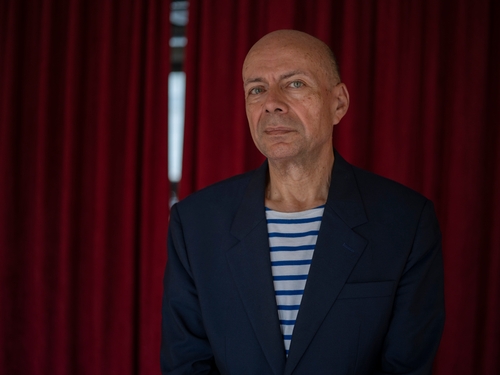
Lesia: Regarding the three directions. You mentioned the process of decolonization. In this sense, is the collaboration or showcasing of contemporary Ukrainian artists relevant? Does it align with the museum’s strategy that you outlined? Is it part of your plans?
Peter: Yes, it is part of our plans. We held an exhibition of Lesia Khomenko’s work and are constantly planning to include Ukrainian artists in our program. Right now, the most important thing for us in the decolonization program is to start with our stars, such as Tatlin, Malevich, and Repin. Then it will be much easier to tell about other contemporary artists working here in Kyiv or abroad. Again, we must create a context. And this context is not Russian; it is Ukrainian. It is very important for us to showcase young artists—they need such platforms. Support is also necessary. It is quite difficult to finance young artists' work if they don’t have a gallery. Or if they do, not all of them have deep pockets. Therefore, we have to maintain a balance: consider how to engage interest, which project to choose, and whether it will be something big or small. For example, in New York, everything is five times more expensive than in other cities. Under such circumstances, it is difficult to work. It’s a long story, so it is important to find that balance.
Lesia: Is this for artists who don’t yet have a stable reputation?
Peter: That’s okay—I’m not against that. By the way, this fall we plan to open a cinema hall that will operate on a loop. You come to the museum, sit down, and can watch classic films, for example, by Dovzhenko or other directors. Sometimes these will be more traditional screenings. Only MoMA has such a cinema. I think many people will come to see our film program. And these will be people who aren’t very concerned with exhibitions but just want to see something new or avant-garde. This is also about creating another option to engage visitors.
Lesia: In your opinion, can Ukrainian art be called a brand? Or is it still too early? And if so, is that a burden or rather an advantage?
Peter: It was already a brand. I would say that Russian culture is built on Ukrainian bones. Everyone knows about the Venice Biennale, a kind of artistic Olympic Games, but very few people know that the Russian pavilion was funded by a person from Kyiv. And in what is called the "Russian avant-garde," 40 or even 50% were Ukrainians. It all existed as a brand. Unfortunately, people have confused Ukrainian and Russian art, and this still continues. This is also about decolonization: affirming the Ukrainian side, not lies and Russian propaganda. It’s about changing the narrative and changing the term to “Ukrainian brand”. It exists, and there are plenty of artists who represent it. Maria Prymachenko — she is a brand. And I would say that the term “brand” now fits artists or painters more.
Lesia: You mean individual names?
Peter: Yes, but this is slowly changing. Because if interest in their work grows, then the Ukrainian brand itself will spread.
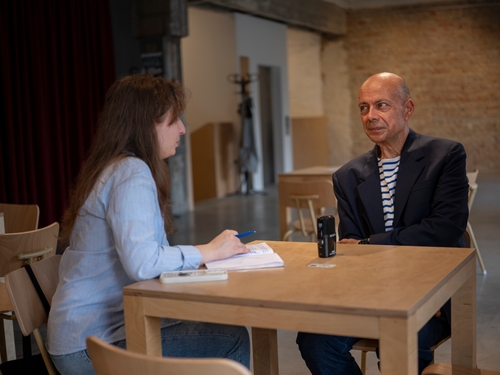
Lesia: Is there a recognizable visual language for this brand?
Peter: No. Again, we have an exhibition about the influence of national items, like embroidered shirts and pysanky, on 20th-century design and art. That’s one thing. But I think the Ukrainian path is also included in the personal idea of the artist’s work. Today, youth have a huge influence on everything. The world has changed, and they change with it. They are like a mirror: they sense which trends exist now. And that’s right.
Lesia: A small clarification: what approximate percentage of Ukrainian art is in American museum collections or private collections, if you know the number?
Peter: 0.0005%.
Lesia: And it’s still often classified there as Russian art?
Peter: Yes. Again, this is changing. Now, people, museum workers, and collectors correctly understand that they were Ukrainians or non-Russians. But the number is still very small, and change takes time. And that is the only positive thing the war has brought: although it is very painful and wrong for everyone, now people are more involved in Ukrainian topics and Ukrainian artists. I think collectors now feel more comfortable buying something from a Ukrainian artist (whether photography, painting, or sculpture) because they know more about Ukraine.
I would say that Russian culture is built on Ukrainian bones. Everyone knows about the Venice Biennale, but very few people know that the Russian pavilion was funded by a person from Kyiv. And in what is called the "Russian avant-garde," 40 or even 50% were Ukrainians.
Lesia: How do you see the future of museums in the digital age? Will digital platforms, virtual tours, and 3D exhibitions help make Ukrainian art more visible worldwide? After all, in wartime, institutions or museums can be destroyed. That’s why in Ukraine, this is often seen as an opportunity to preserve art in another form so it can continue to exist. But how is this perceived abroad?
Peter: I think every nation has its own culture. And digitalization is very important worldwide. It’s a good foundation. I know that many museums in Ukraine (and rightly so) have virtual reality glasses, exhibitions of virtual objects. But it really doesn’t work in America.
Lesia: Wow, that’s unexpected.
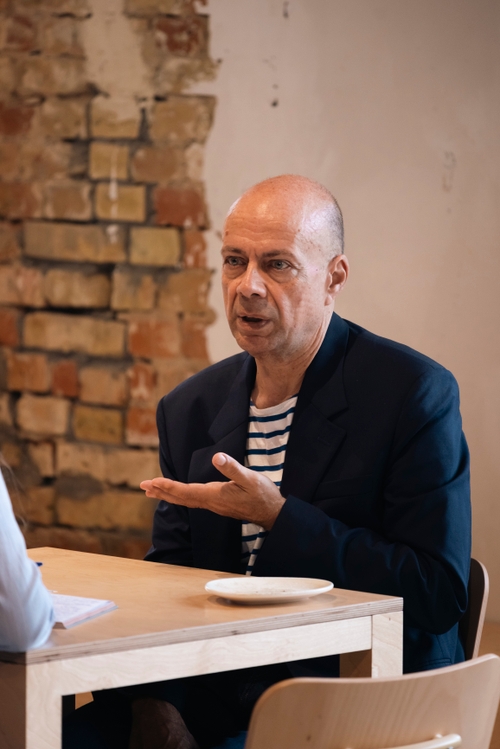
Peter: People feel uncomfortable with it. Watching a film on a smartphone, reading a classic book, going to an exhibition or a fair — no problem. But standing there with a VR headset on… It doesn’t work. Why? Because most people don’t have enough time to stand there for half an hour and watch. Such events exist, and museums do them, but not many. Again, for American culture, time is very important, and not everyone will set aside 20-30 minutes for that. I would say that nowadays many are returning to classical things like books and catalogs. Also, many people are interested in watching short and long videos or films. And that’s because they can watch them on their smartphones. Everything in the U.S. is moving to smartphones. I would say about 55% of museum website users visit it via phone. The older generation still uses computers, but every year 5% more users come from phones.
Over the last year, we had to rethink our approach. So we will be redesigning our website, adding videos. We also found out that there are many art-interested people abroad, especially from Ukraine. These are people from Kharkiv, Zaporizhzhia, Kherson, Vinnytsia, and other places where there are no museums or they are closed. And so among those who visit our Instagram or Facebook, now there are more Ukrainians than U.S. residents. Not by 5%, but almost 12%. Over 52% switch between the two languages. And these people are interested in what is happening in New York, what we are doing, and what we participate in.
Previously, we had to change how we work because we knew it was important for those living nearby. But now I see we have to engage Ukrainians worldwide so they can also learn as much information as possible, and quickly. That’s why we will be creating a mobile app. It will have several functions. First, it will connect to a membership card, so we get rid of paper. Second, it will let users join our events — whether a roundtable on decolonization or an online program. This will allow them to watch films shown repeatedly in the cinema hall because not everyone can come to New York. And third, it will provide a connection to our website to get more information and translate it as quickly as possible.
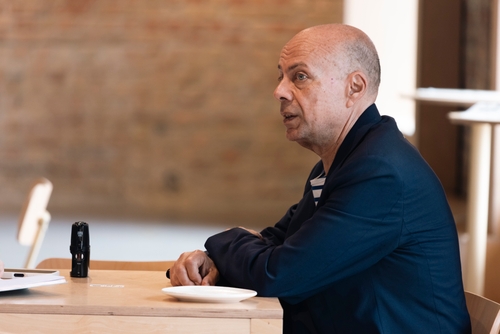
Lesia: So digitalization makes art more accessible to everyone.
Peter: Yes, absolutely.
Everyone must be proud to be Ukrainian.
Lesia: In your opinion, which institutions or countries should Ukraine establish more systematic cooperation with in the field of art, something we aren’t doing yet?
Peter: I would say it’s much easier to work with European museums and organizations. Ukraine is located in Europe, and they understand this very well and are quite open. I think the French are very interested in Ukraine because of historical reasons. There is a large diaspora in Portugal, and I believe the Portuguese are very interested too. Also, Spaniards, English, Germans. Canadians (because of the large diaspora there) and Americans are interested in more classical things, but that’s changing as well. The older generation has its own interests, but it’s very classical, conservative, not ready to accept the new because they don’t understand it and have never had access to it. Young people want to learn as much as possible, find information, especially through digital platforms. So, I think the most important thing is for artists and museums in Ukraine to work with nations where people can quickly master these platforms.
Lesia: Imagine this scenario: if you had an unlimited budget and could reach out to anyone, what one project representing Ukrainian culture would you want to realize? Would it be an exhibition, a digital platform, a museum, or something else?
Peter: I would write the history of Ukrainian art from the earliest times: from ceramics 1,500 years ago to contemporary art. Let it be 5–10 books that would serve as the foundation for such a history. Again, exhibitions are very important, but the spaces at the Metropolitan Museum of Art in New York cannot accommodate everything about Ukraine. Of course, that exhibition would be interesting, but I think it’s more important to have 5–10 such books, and then transfer them onto a special website, set up links to other organizations, a thematic index, a “share” option… That would be the best: to have such a website, a super database about everything that has been developed in Ukrainian culture over a millennium.

Lesia: And the last question: What gives you hope now, professionally or personally? What supports you?
Peter: I think it is telling the world how Ukrainians had their own culture but a difficult history, and showing what is happening now. And we will keep doing our part, fighting for ourselves, and spreading information so everyone knows who we are. Every day I wake up and think about how I can spread this and improve it. Because this opportunity exists, and every day I learn something I didn’t know before. It’s important for me to create context and then, based on that, write a journal article, give a lecture, conduct a workshop, or an exhibition. That gives me a positive vibe and energy! I think people who are also interested would join this process. Everyone must be proud to be Ukrainian.
Want to read the interview with Peter Doroshenko in Ukrainian? Click here.
